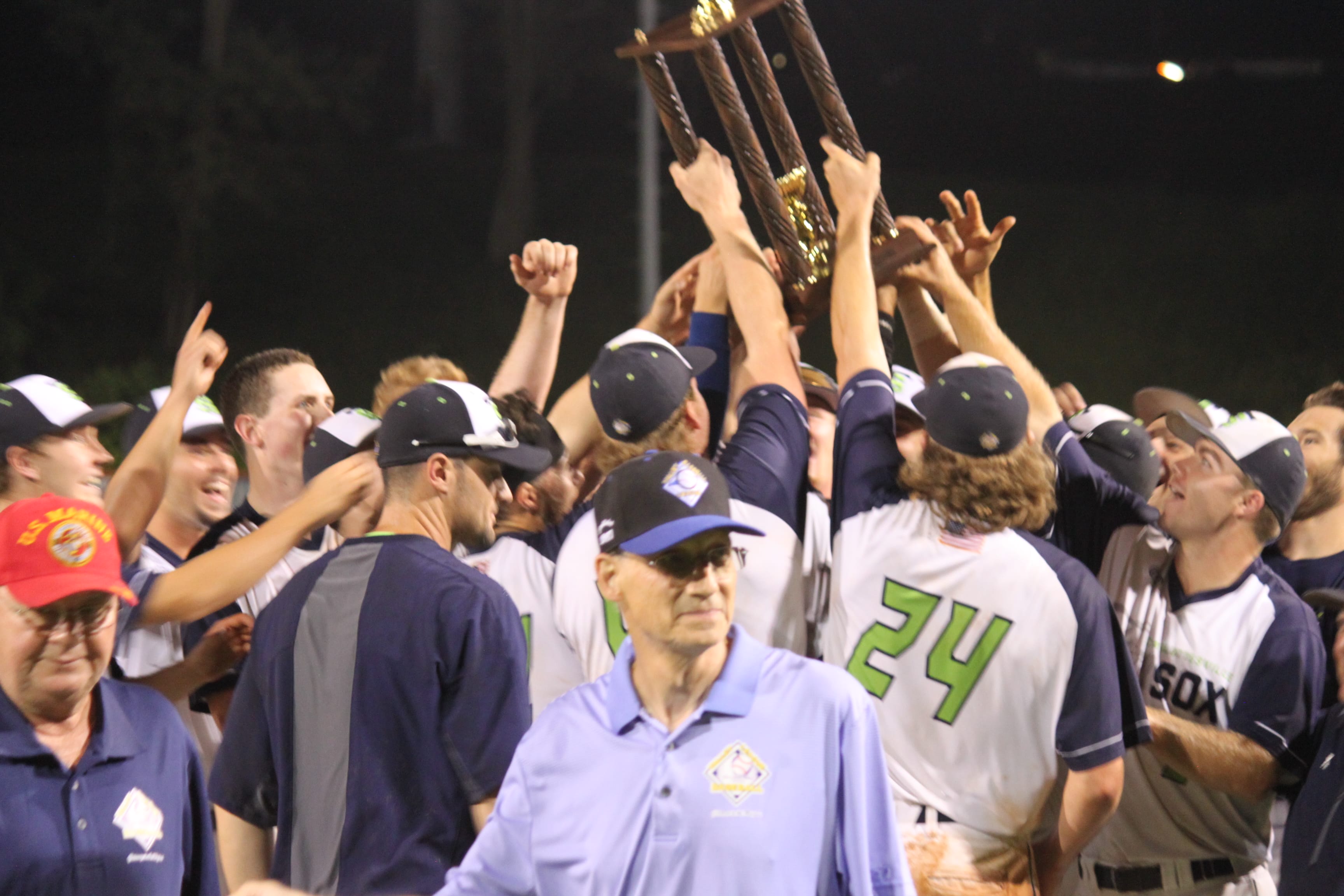
The analytics revolution has arrived in the Valley League, whose two most successful teams employ cutting-edge approaches to winning baseball games.
By John Leonard, contributor
John Leonard has been writing a regular baseball column for The Citizen this summer. You can find much more of his writing on his website, All Things Valley League. He’s working on a 2019 Valley League Annual that will come out this fall.
About 12 days ago, Charlottesville lefthander Sam Crawford (Georgia Tech) blew strike three past Strasburg’s Bryson Horne (Columbus State), finishing off Crawford’s dominating 5 ? shutout relief innings as well as the Strasburg Express’s hopes of winning the Valley League championship series. Crawford’s teammates on the Charlottesville Tom Sox celebrated the franchise’s second Valley League title in the last three years with a dogpile on the mound.
It wasn’t surprising to see the Tom Sox on top again; one of the best-run organizations in the Valley, the team has also differentiated itself by being on the cutting edge of the use of analytics since 2017. The franchise uses a small army of interns to track a number of statistics to help both the coaching staff and the players’ college coaches. In particular, the team uses a “piggy-back” starting pitcher schedule, with two starters and a closer ready to pitch in each game. If all goes well, the two starters will throw four or five innings each, with the closer ready to pitch one if needed. This approach, which limits pitch counts and potential overuse injuries, surely seems to be working – the team, established in 2015, has gone an amazing 81-45 in the regular season over the last three years.
While the Express came up short in this showdown (as they also did against the Tom Sox in the 2017 finals), the team has been as successful as any over the last few years. The Express do things a little differently than the Tom Sox. Their organizational philosophy: try to get to 20 wins as quickly as possible, thereby almost guaranteeing a playoff spot, and then working to keep everyone healthy and engaged, ready for a deep postseason run.
“We are happy to win pennants but we prefer to win rings and will never sacrifice a guy’s health or the potential to use him in the playoffs to chase a pennant and/or national rankings,” said Express General Manager Parker Neal. “I think you see that a bit with our regular season records but then our success in the playoffs.”
It’s true; the Express is “only” 116-93 in the regular season over the past five years, but has won two titles, in 2015 and 2016, and been to the finals four times.
Baseball is definitely an industry made up of copycats; what works for one team at any level will often be mimicked by others. This leaves them all constantly searching for the newest way to do the same old thing – win baseball games. So, when the summer of 2020 rolls around, will other Valley League teams more blatantly follow Charlottesville’s and Strasburg’s successful examples, or will we see the same matchup in the finals for a third year out of the last four?
Final Notes on the 2019 Season:
- The Valley League is a monstrous undertaking. This summer, exactly 450 college players descended upon the Shenandoah Valley to appear in at least one Valley League game.
- Two players named Trey Fields played this summer. Oddly, both are rising sophomores, and both are right-handed pitchers. The similarities stop there; one pitched for Front Royal, and the other for Strasburg. The Front Royal Trey Fields is from Lemon Bay, Florida, and attends South Florida State. The Strasburg Fields attends Charleston, and hails from Kingsport, Tennessee.
- A whopping 15 JMU Dukes played in the Valley, while Eastern Mennonite University and Bridgewater College added two players each. Twelve came from VCU, two from the University of Virginia, and five each from Virginia Tech, Radford, and VMI. JMU and VCU sent the most, while Young Harris College, a Division-II school in Georgia, had the third most, with eight.
- 2019 was definitely the summer of the hitter. Three finished with a batting average over .400, while 30 (almost three per team) finished hitting .300 or better. In 2018, just one batter finished over .400, and 25 over .300.
- Last but not least, for anyone who might think this is “just” a two-month affair, contracts for the summer of 2020 are coming in already.
Journalism is changing, and that’s why The Citizen is here. We’re independent. We’re local. We pay our contributors, and the money you give goes directly to the reporting. No overhead. No printing costs. Just facts, stories and context. Thanks for your support.














